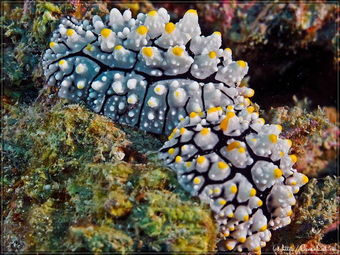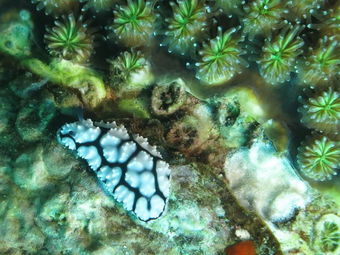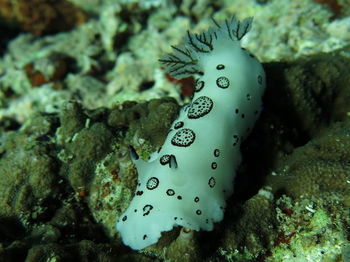Marine Life when diving in Koh Tao: Nudibranchs
Most of the divers coming for diving in Koh Tao with the expectation to see a whale shark or big turtle and just a few of them notice the smallest inhabitants of Koh Tao’s coral reefs that are the real hidden treasures of the ocean — Nudibranchs, part of the sea slug family. They have different shapes, sizes, and colors. They can be as small as 6mm and as large as 40cm (The Spanish Dancer).
There are more than 3,000 species of nudibranch worldwide, they are found in tropical and temperate seas as well as Antarctica, although they are most common in the shallows. For example, you can find them on Koh Tao’s dive sites White Rock, Twins and Japanese Garden.



Their scientific name, Nudibranchia, means naked gills and describes the feathery gills and horns that most wear on their backs.
Some nudibranchs are poisonous while others pretend to be poisonous, which is evident by their vibrant colors. They feed on stinging cells of hydrozoans and store them in the rear of their body for protection. They can also ingest toxins from sponges and become toxic and inedible. Some nudibranchs even produce their own chemicals.
Nudibranchs are hermaphrodites. While mating, they fertilize each other, although a nudibranch cannot fertilize itself. They then both lay eggs in a beautiful spiral.
Quite a nice view of this account could be seen at Shark Island dive site, on the south of Koh Tao.
Most nudibranchs are benthic, meaning they crawl on the seafloor, but there are a few species that are pelagic and live in the water column or on the surface. One of these species digests the stinging tentacles of a Portuguese Man-of-War, transferring them from its gut to the surface of its skin as a defense mechanism (Glaucus or Blue Dragon).
The two ‘horns’ of a nudibranch, on top of the head, are actually called rhinophores, these are basically chemical receptors that allow the nudibranch to find food and mates.
Cannibalism exists in the nudibranch world. Some species eat other nudibranchs, as well as nudibranchs of their own species.
Nudibranch is commonly found at all the dive sites around Koh Tao, so keep your eyes open on your dives or just ask your instructor to point them out to you.


